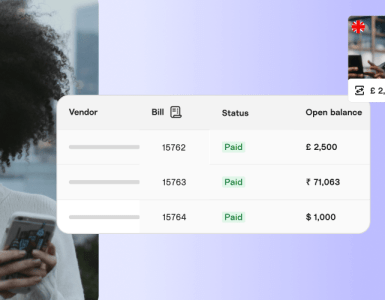Whether you’re applying for a full-time role as a graphic designer or trying to win more work as a freelancer, you’ll need to write a cover letter.
While you might think that your portfolio is all that really matters, a good graphic design cover letter is vital in helping you stand out from the crowd.
So, what should your cover letter look like? Even if you’ve taken graphic design freelance jobs in the past, you might be unsure about the conventions of applying for full-time employment. You might be faced with a potential client who wants a full cover letter – and you’re not even sure who to address it to!
We’re going to go through what your cover letter needs to include, and some tips for writing it, plus examples and templates to help you structure a great letter.
What Your Cover Letter Should Include
Your cover letter shouldn’t simply rehash every point on your resume or give every detail of your story about becoming a graphic designer. Instead, it should make it clear how your skills, experience, and interests are a great match for the role that you’re applying for.
Your cover letter needs to include:
- A sense of enthusiasm about the role you’re applying for, and some level of knowledge about the company. Your letter shouldn’t sound generic, as though you’re sending an identical cover letter to dozens of other graphic design companies.
- Your key skills that relate to the role, along with specific evidence about those skills. This is a great place to give numbers (e.g. “increased client transactions by…” or “exceeded revenue expectations by…” and a percentage).
- Ideally, a sense of your personality. You don’t want to go over the top here – cracking jokes probably isn’t going to be appropriate – but you also don’t want your cover letter to sound like it was written by a robot.
How Long Should Your Cover Letter Be?
Your cover letter doesn’t need to be especially long. In fact, it’s better to keep it fairly short. Keep in mind that the hiring manager will have a lot of cover letters and resumes to read – on top of doing all the usual tasks for their role.
Your cover letter should normally be 3 – 4 paragraphs long. That’s around 200 – 250 words in total. This might not seem like much – and it isn’t. But it should be enough to get across the key points about how you’re a good fit for the role.
Cover Letter Dos And Dont’s
Do Use Bullet Points, If Appropriate – Sometimes, it makes sense to summarize key achievements or skills in bullet point form. It’s fine to do that in your cover letter. Equally, it’s fine to stick with just using paragraphs, if that works better for you.
Don’t Sound Too Pushy – While it’s great to show confidence, you don’t want to write anything like Let’s meet next Wednesday at 2pm to discuss the role. It comes across as off-puttingly pushy and presumptuous. Leave it up to the hiring manager to decide whether (and when!) they want to interview you.
Do Get Feedback on Your Cover Letter – It’s a great idea to get some feedback on your graphic design cover letter. This doesn’t even need to be from someone in the graphic design community. You could ask a friend or family member to read through to help you make sure your letter flows well, and to help with spotting any typos or errors.
Don’t Rush Your Cover Letter – It’s easy for a cover letter to become an afterthought. However, it’s not something you want to dash off in a frantic few minutes. Give yourself plenty of time to draft your cover letter, and to edit it too.
Graphic Design Cover Letter Templates
While there’s no “perfect” way to structure your cover letter, you might find it helpful to use a template to help you get started.
Here’s a simple graphic design cover letter template that you can use:
Dear [name, or Hiring Manager],
First paragraph:
- Introduce yourself – ideally with something that will pique their interest, but even “I’m excited to apply for the X role” is fine.
- Add a sentence about the company’s current endeavors, and how you’re a great fit for them.
Second paragraph:
- Write about a key achievement from your most recent role. Make sure you pick something that matches up to the skills or experience that the employer needs for the role.
Third paragraph:
- Add information about another key achievement or area you’ve been working in. Again, be sure to tailor this to the role.
Fourth paragraph:
- Reiterate your enthusiasm for the role. You may want to thank the employer for their time and consideration, and you may want to state that you’d love to talk to them further (i.e. have an interview for the role).
“Sincerely” or “Best regards”, followed by your name, are good ways to close your cover letter.
Keep in mind that this is just one possible template. There are plenty of other ways you can structure a graphic design cover letter.
Graphic Design Cover Letter Examples
Example #1: Entry-Level Role
Dear Hiring Manager,
I’m a graphic design major just finishing up my fourth year of college, on track for a GPA of 4.0. I’d love to be considered for your junior graphic designer role at XYZ Designs.
I’ve been interested in art and design for as long as I can remember, and my degree has helped me hone my already strong design skills. When it comes to software, I’m adept with Adobe Photoshop, Adobe Illustrator, CorelDRAW, and Affinity Designer.
Alongside my studies, I did some freelance design work for a number of clients, covering a range of different industries and projects. My favorite was the brochure I created for a climbing club (where I’m a regular). Overall, clients were really positive about my work, giving me a 97% average satisfaction score.
I’ve been a fan of your work for a long time: my second-year project looked at XYZ Designs’ “Justice” campaign. I’d love to talk with you more about the junior graphic designer role. Thanks for your time and consideration.
Sincerely,
[Your name]
[Phone number]
[Email address]
Example #2: Mid-Level Role
Dear Hiring Manager,
As a graphic designer with 5 years of experience, I believe I would be an excellent candidate for the website design role with XYZ Designs. A major part of my role with my current employer, Acme Designs, has involved creating website graphics for the company’s clients.
My infographics were rated an average 9.7/10 across 43 different client projects. More importantly, they delivered results: those clients saw an average 15% boost in traffic to content with infographics and almost double the amount of social sharing.
As well as creating infographics, I supported the Acme Designs content team by creating custom graphics for key pieces. Along with this, I developed templates in Photoshop and Affinity Designer that the content team could easily use to create their own featured images. These templates ensured consistency between different content creators. They were very well received within the company, with one colleague telling me that I’d saved them “literally hours of frustration every week.”
I’ve admired XYZ Designs’ work for several years, and thought your golden Design Duck award last year was particularly well deserved. I’d love to have the chance to talk with you more about the website design role and what I can bring to it.
Sincerely,
[Your name]
[Phone number]
[Email address]
Give yourself plenty of time to write your cover letter, follow the tips above, and hopefully you’ll land the graphic design job of your dreams. If you’d like to check out a few more examples of effective cover letters, we’d recommend this list of cover letter examples from Livecareer.
Looking to find work as a freelance graphic designer? Sign up to Twine and pitch on a varied selection of graphic design jobs.
Once you’ve secured that first client, streamline the revision process with ReviewStudio, which allows you to track revisions and annotate drafts with detailed feedback.





